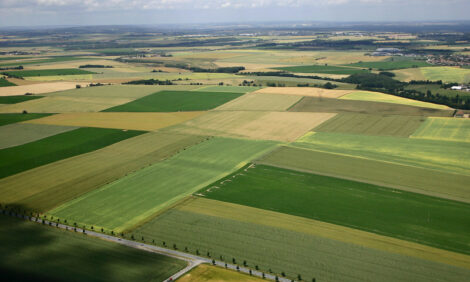



Marketing US Pork and Beef in Japan
JAPAN - Two members of the Nebraska Soybean Board’s (NSB) officer team have just completed a five-day trade mission through Japan.
Mike Korth is a farmer/rancher from Randolph, Neb., who represents a seven-county area of northeastern Nebraska and serves as board secretary. Duane Lee farms and raises cattle and hogs near Albion, Neb. He is an at-large member of the NSB and serves as the board’s treasurer.They were accompanied by staff from the U.S. Meat Export Federation’s (USMEF) Japan operations and NSB Executive Director Victor Bohuslavsky.
Through face-to-face interaction with key meat buyers as well as Japanese consumers, Korth and Lee gained a better understanding of how financial support from the NSB and the soybean industry is used to enhance sales of U.S. beef and pork in this critical export market. Japan is currently the single largest market for U.S. pork exports when measured by value ($712.3 million in the first half of 2008 – a 23 percent increase over 2007). It was also once the largest market for U.S. beef before closing to beef exports in December 2003. Since reopening to beef from U.S. cattle 20 months of age and younger, Japan has climbed back to the third-largest beef (including variety meat) export market in terms of value ($177 million in the first half of 2008 – a 70 percent increase over the same time period last year).
Korth, who owns a cow-calf and cattle-feeding operation in addition to growing soybeans, corn and alfalfa, says regaining U.S. market share in a critical market like Japan is crucial for both livestock producers and grain farmers.
“I’m not just a grain farmer, I’m a beef producer as well,” Korth said. “Coming over here (to Japan) and trying to expand our market back into what was a very loyal partner – it’s an extremely good opportunity to try to get back our market share.”
The group met with leading importers and distributors from Japan’s meat processing and marketing sectors to learn more about the opportunities and challenges this market presents for U.S. beef and pork. In addition, they had an opportunity to interact with everyday Japanese consumers at a series of promotional barbecue events sponsored by NSB. At these events - two in Tokyo and a third tasting event in Shizuoka - the two were able to share their experiences as producers and convey their own personal “We Care” message directly to mothers, fathers and children as well as in interviews with national newspapers, trade magazines and local TV. Korth found consumers participating in the barbecues to be very receptive to U.S. products.
“I told them I feed this same meat to my kids. It’s safe and that’s how we want to keep it,” Korth said. “If you make the parents happy, that’s what they’re going to go pick up at the store.”
* "They (importers) are having a hard time getting the under-20-months-of-age meat. They feel they could get into more stores and could move the product – if they could just get it." |
|
Duane LeeNebraska Soybean Board (NSB) member
|
Lee, who raises cattle and hogs as well as growing soybeans, corn and hay, agreed that Japanese consumers are very complimentary of U.S. beef and pork. He said consumer attitudes toward U.S. beef have improved dramatically compared to when he visited Japan about two years ago and the market had just reopened to U.S. beef.
“The perception seems to be improving a lot. I feel they are really willing to accept our beef,” Lee said.
He noted, however, that the biggest obstacle now facing beef exports is that supply is limited to beef from cattle no more than 20 months of age.
“They (importers) are having a hard time getting the under-20-months-of-age meat,” Lee said. “They feel they could get into more stores and could move the product – if they could just get it.”
USMEF-Japan Director Greg Hanes said the continued growth of beef exports to this market is being bolstered by a USMEF strategy to market a wider range of beef cuts in Japan. This allows more product to be marketed from the limited supply of Japan-eligible cattle.
“Traditionally, Japanese buyers only purchased a handful of U.S. beef cuts,” Hanes said. “But with the help of some key industry partners, we developed and have been actively promoting 17 alternative new beef cuts that specifically serve the needs of our customers in Japan, and are still perfect for Japanese cuisine.”
The team also attended a U.S. beef chef’s competition in which pairs of chefs from top Tokyo hotel restaurants created unique dishes with brisket, one of the underutilized cuts, and tenderloin, a cut that has seen limited use in Japan.
“I was really impressed by the formality of the event.” Korth noted. “Those chefs were very serious and really created some great-looking meals. You could tell they appreciate the quality of U.S. beef.”
Lee said meeting the needs of Japanese buyers and consumers is critical to success in the market, and he saw great mutual benefit in meeting with these customers face-to-face. They learned more about the “human side” of the U.S. industry and the care that is given when U.S. meat is produced, while he gained valuable insights into consumer preferences in Japan through their positive reactions to U.S. pork and beef.
“I think it’s very important that we put a face with the product. They really like that,” he said. “And we have to do our best to keep our product safe and dependable. We’re going to need international markets in order to stay profitable.”
TheCattleSite News Desk


